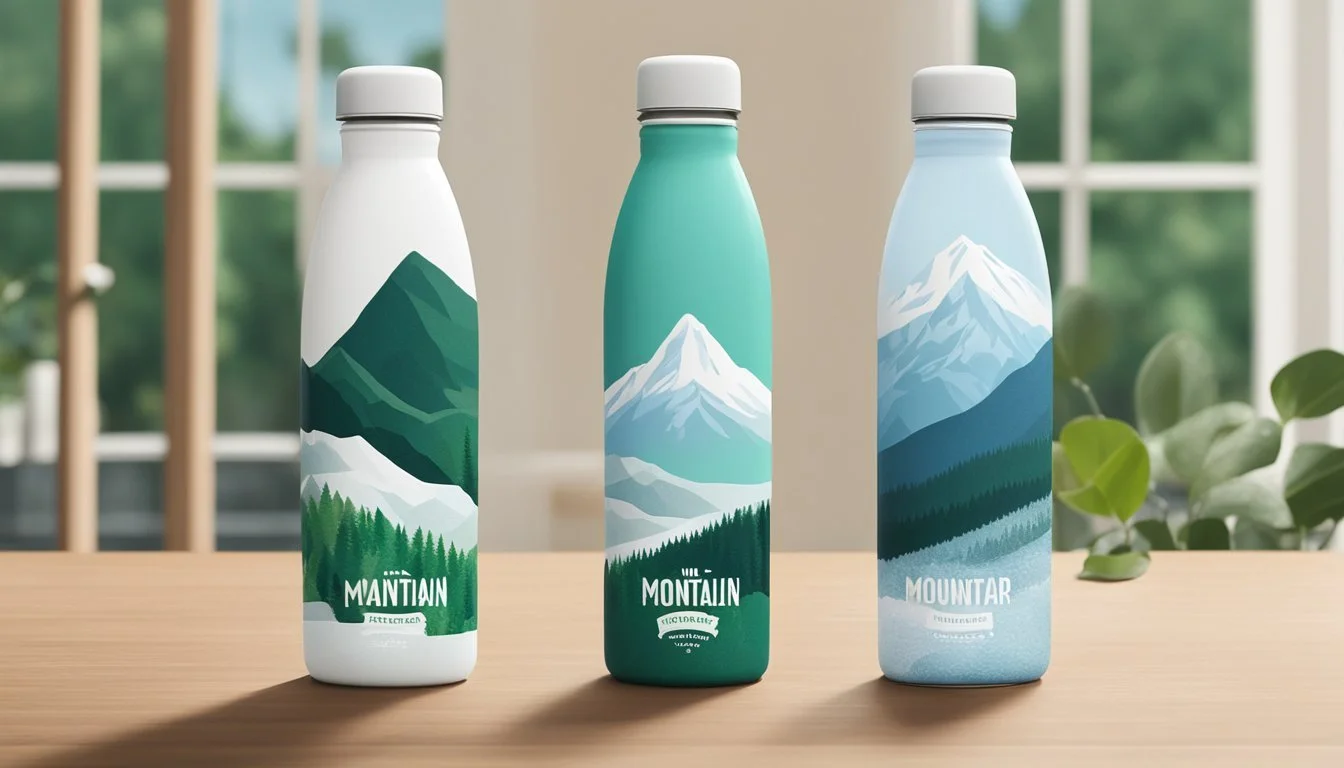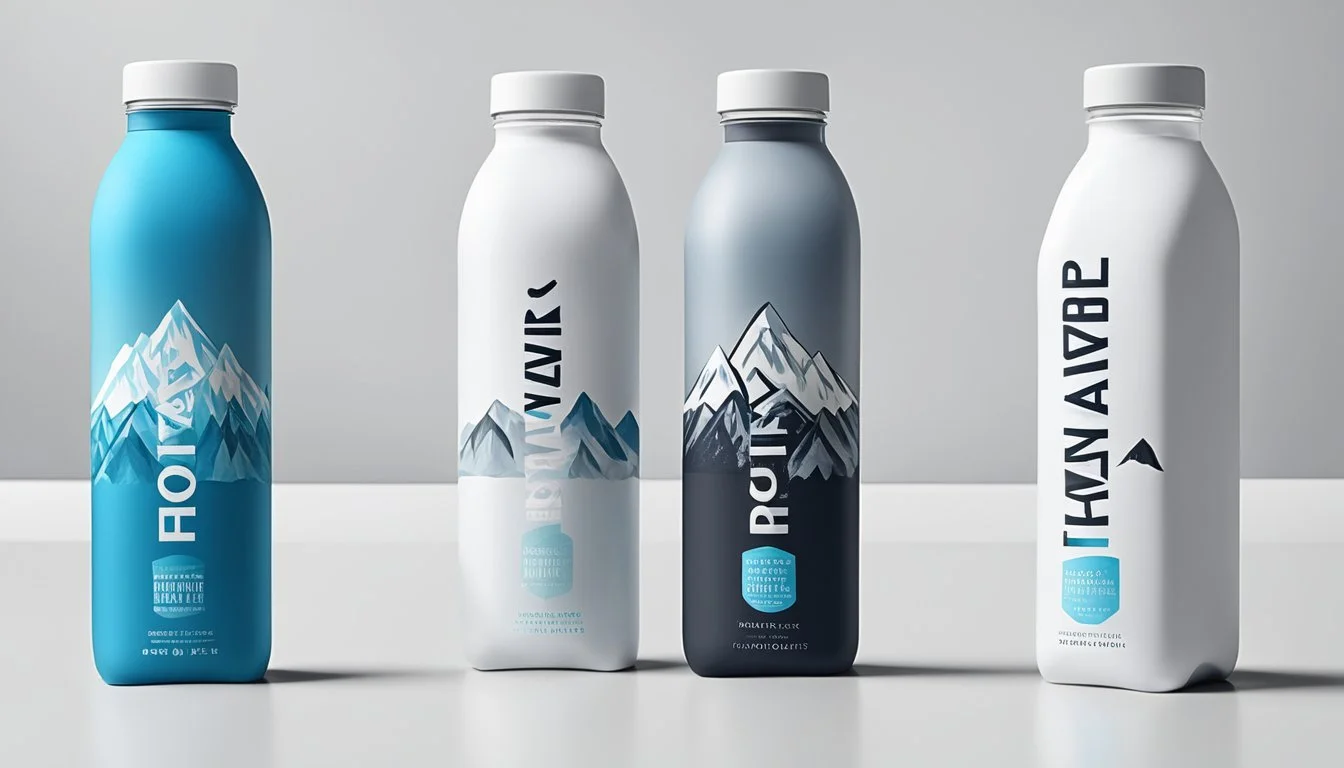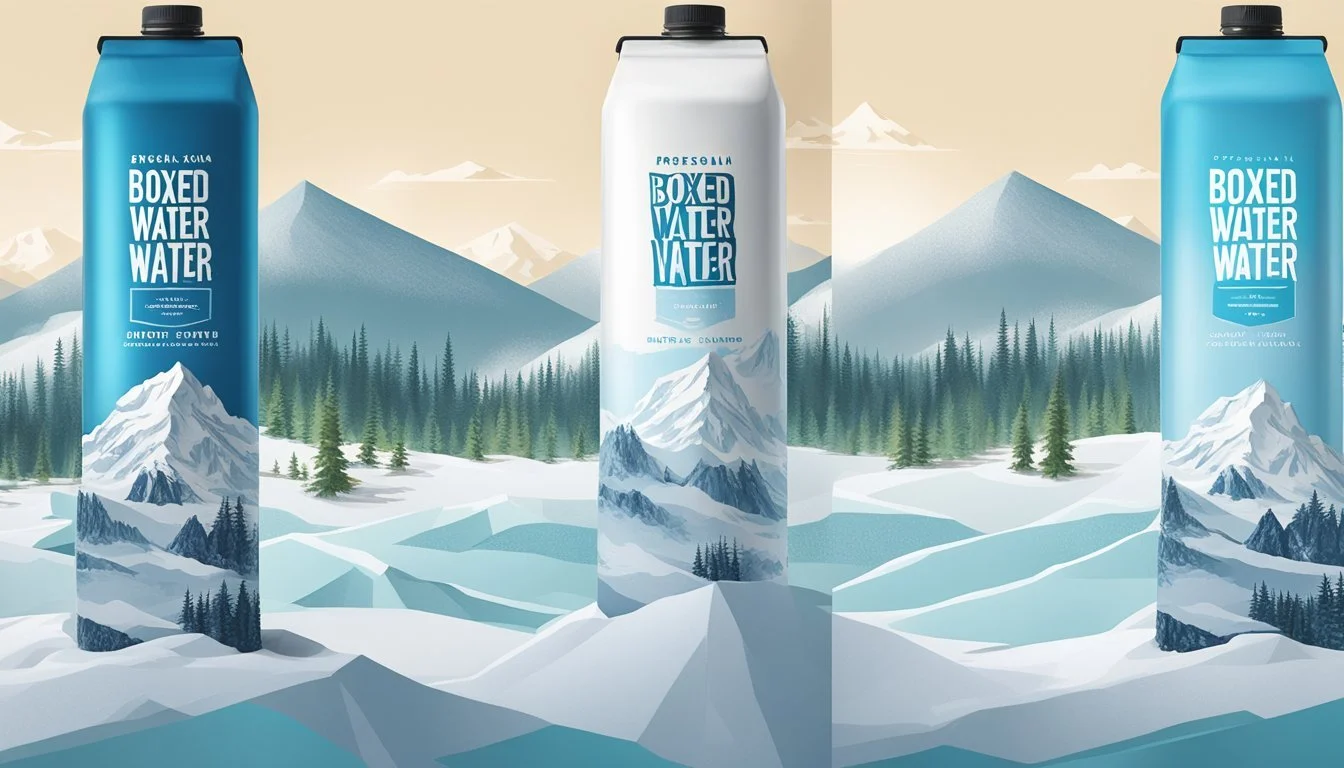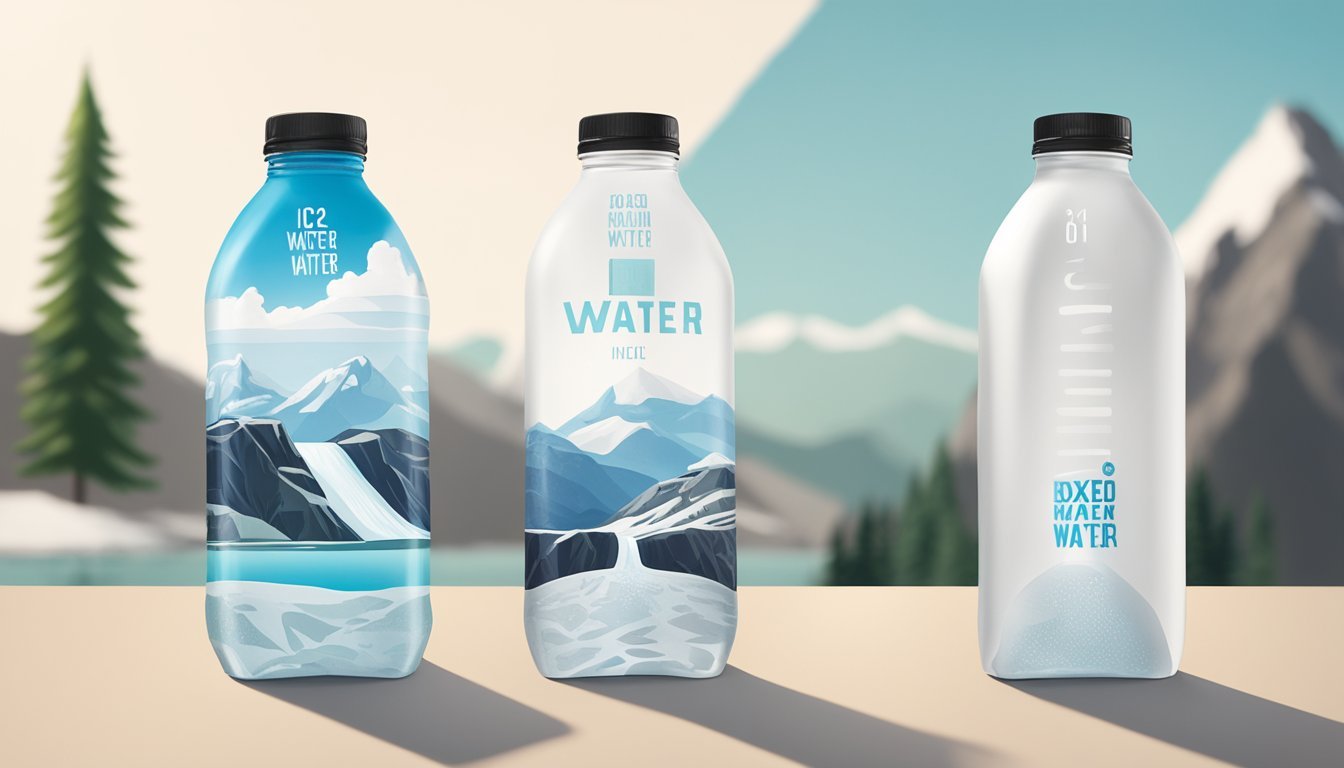Boxed Water vs. Ice Mountain
A Comprehensive Comparison of Bottled Water Brands
When it comes to staying hydrated, consumers are faced with a plethora of choices, two of which are Boxed Water and Ice Mountain. Boxed Water presents itself as a sustainable alternative to traditional plastic bottles with its mostly paper-based cartons that are purported to be more eco-friendly. Claiming to have a minimal environmental footprint due to its use of renewable resources, it appeals to the environmentally conscious market.
On the other hand, Ice Mountain is a well-known brand in the bottled water market, offering water sourced from springs across the Midwest. It aims to deliver a natural and refreshing product for hydration needs. As the bottled water industry continues to grow, customers are increasingly interested in not only the quality and taste of the water they drink but also the impact their choices have on the environment. The debate between Boxed Water and Ice Mountain encompasses these concerns, as both brands strive to provide a beneficial product for their consumers.
Boxed Water and Ice Mountain Overview
In the realm of bottled water, consumers often look for eco-friendliness and purity. Boxed Water and Ice Mountain present two distinct offerings steeped in sustainable practices and quality considerations.
Understanding Boxed Water
Boxed Water is a company that stands out for its unique packaging. It provides water in cartons made predominantly from paper, a renewable resource. Boxed Water emphasizes its commitment to sustainability, with paper sourced from well-managed forests and packaging that is recyclable. The brand has positioned itself as an eco-conscious alternative within the bottled water industry, aligning with consumers who prioritize sustainable solutions.
The Story of Ice Mountain
Ice Mountain, on the other hand, is a spring water brand that falls under the umbrella of Nestlé Waters. It offers bottled water from several natural springs located in the Midwest, specifically stating that it's 100% natural spring water. Nestlé, the parent company, often highlights its dedication to responsible water stewardship and efforts to reduce the environmental impact of its bottled water products like Ice Mountain.
Packaging and Environmental Concerns
In this section, we evaluate the materials used in Boxed Water and Ice Mountain packaging and their respective impacts on the environment.
Material Analysis: Paper vs. Plastic
Boxed Water uses paper-based packaging, sourced from trees, which are a renewable resource. The paper cartons are composed of about 76% paper, 20% plastic, and 4% aluminum. They claim that their cartons are recyclable, where facilities exist. In contrast, Ice Mountain typically utilizes 100% plastic bottles, made from petrochemicals, which are derived from oil.
Recyclability: - Boxed Water: Paper cartons are recyclable in communities with proper facilities. - Ice Mountain: Plastic bottles are widely recyclable, but the rate of recycling remains low.
Sustainability: - Boxed Water: Relies on a renewable source (trees), but the effectiveness depends on sustainable forestry practices. - Ice Mountain: Relies on non-renewable oil for plastic production, and requires more energy in the recycling process.
Environmental Impact of Bottled Water
The manufacturing and disposal of bottled water packaging have significant environmental impacts. Boxed Water’s paper-based cartons may have a lower impact on ozone depletion and global warming potential compared to aluminum and plastic packaging. The plastic bottles used by Ice Mountain, while lightweight and durable, contribute to environmental concerns due to their long-term persistence in the environment and the energy required to recycle or produce new plastic.
Energy Consumption: - Boxed Water: Requires less energy to produce compared to plastic, but still consumes resources. - Ice Mountain: More energy-intensive due to the extraction and processing of oil.
Both Boxed Water and Ice Mountain emphasize the need for recycling to mitigate environmental concerns, yet the success of these initiatives largely depends on consumer behavior and local recycling capabilities.
Water Quality and Sources
The purity of bottled water hinges on its source and the rigor of its filtration and purification. The credibility of a brand often aligns with its transparency regarding these elements.
Analyzing Water Sources
Boxed Water draws its content from municipal sources, which then undergoes a thorough treatment process. The appeal of Boxed Water primarily lies in its sustainability commitments rather than exotic water sources.
Ice Mountain utilizes natural groundwater and mountain spring water, sourcing from carefully selected springs in the United States. These sources are reputed for their natural filtration and consistent composition, which often requires less treatment before bottling.
Filtration and Purification Processes
Both companies employ advanced filtration and purification techniques to ensure safety and taste:
Boxed Water implements a proprietary multi-step process, including UV treatment, micron filtration, and reverse osmosis. Their Hydro-7™ purification process claims to remove impurities while retaining beneficial minerals, although the exact details of this are not publicly disclosed.
Boxed Water Filtration UV Treatment Micron Filtration Reverse Osmosis Hydro-7™ Purification
Ice Mountain, on the other hand, focuses on preserving the natural quality of the water while eliminating contaminants. This involves layers of filtration but the specifics of the process are company-held secrets, designed to meet or surpass industry standards.
Ice Mountain Filtration Carbon Filtration Micron Filtration Reverse Osmosis
Health and Safety Standards
The health and safety of bottled water is primarily determined by adherence to EPA regulations and the health benefits derived from its consumption. This section compares the standards that Boxed Water and Ice Mountain must meet and the benefits they offer to consumers in their quest for hydration.
EPA and Industry Regulations
Boxed Water and Ice Mountain are subject to the Environmental Protection Agency (EPA) regulations which ensure that all bottled water sold in the United States meets stringent safety standards. Bottled water must be tested and certified to be free from harmful contaminants. Boxed Water is aligned with EPA standards and often emphasizes its eco-friendly packaging as part of its health and sustainability commitment. In contrast, Ice Mountain, under the umbrella of parent company Nestlé, also complies with the EPA's regulations and affirms the cleanliness of its water sources.
EPA Standards for Bottled Water:
Contaminant Levels: Must not exceed EPA-set Maximum Contaminant Levels.
Testing: Frequent testing for microbiological, chemical, radiological, and physical contaminants.
Certification: Facilities and products are regularly inspected and certified by the EPA or state agencies.
Both Boxed Water and Ice Mountain are expected to provide clean drinking water that is safe for consumption. Additionally, they can obtain certifications from third-party organizations which can add to the confidence consumers have in their health and safety standards.
Comparing Health Benefits
When evaluating the health benefits of Boxed Water versus Ice Mountain, one must consider the quality and source of the water. Both brands are tasked with offering a product that contributes to proper hydration, a core component of a healthy lifestyle.
Boxed Water:
Claims to offer pure water that supports consumer hydration needs.
Uses reverse osmosis filtration to ensure a clean taste and high-quality water.
Ice Mountain:
Sourced from natural springs and claims to provide essential minerals for a healthy body.
Has a range of products, including their Core Hydration line, designed to help with optimal hydration and taste.
The choice between the two brands may hinge on consumer preference for source type (spring vs. filtered) and packaging, but both prioritize providing a healthy hydration option.
Consumer Experience and Accessibility
The consumer's experience with bottled water is shaped by how they perceive the taste and purity, as well as the product's convenience and portability. Factors such as quality, branding like Pure Life or Penta, and packaging play significant roles in these perceptions.
Taste and Purity Perception
Boxed Water and Ice Mountain offer distinctly different experiences when it comes to taste and the perceived purity of the water. Boxed Water promotes an image of high-quality water with its minimalistic packaging and a focus on eco-friendliness, which may influence consumers' perception of a cleaner taste. Ice Mountain, sourced from natural springs, often highlights the purity of its product on the label, aiming to assure customers about the natural origin of the water.
Consumers often associate the taste and purity of bottled water with the trustworthiness of the brand. While Pure Life is mentioned in search results as average, it's important to note that consumer trust in a brand like Penta—known for its ultra-purified drinking water—can be higher due to its claims of a nine-step purification process.
Convenience and Portability
In terms of convenience and portability, the design of the packaging plays a crucial role. Boxed Water's rectangular shape might be less common and could affect how easily it fits into car cup holders or backpack pockets. On the other hand, Ice Mountain comes in the traditional cylindrical plastic bottle, which consumers find familiar and easy to handle.
Boxed Water's packaging, while bulkier, is made from renewable resources and is more sustainable, potentially appealing to environmentally conscious consumers. Portable considerations include the ease of opening, the option to reseal, and the durability of the container when on the move. Ice Mountain, being widely available, is often seen as a go-to choice for those seeking convenience.
Brand Analysis and Market Presence
This section will examine Boxed Water and Ice Mountain's strategic approaches in the market, their standing and trust among consumers, along with how they convey their brand messages through advertising.
Market Strategies of Boxed Water and Ice Mountain
Boxed Water prides itself on being a sustainable alternative to plastic bottles. They utilize cartons made with 74 percent paper and claim environmental responsibility as a core component of their branding strategy. Ice Mountain, on the other hand, owned by Nestlé, focuses on sourcing from natural springs and emphasizes the purity and taste of their water.
Boxed Water:
Sustainability: Emphasizing eco-friendliness with a plant-based cap and recyclable materials.
Innovation: Positioned as a novel approach against traditional plastic bottles.
Ice Mountain:
Purity: Highlights its natural spring source.
Accessibility: Widely available, targeting convenience for consumers.
Comparing Consumer Trust and Brand Value
Consumer trust leans towards brands that demonstrate consistent quality and transparent practices. Here, Ice Mountain enjoys widespread recognition through Nestlé's extensive distribution. Meanwhile, Boxed Water is building its brand value around the concept of sustainability, attempting to tap into the conscious consumer market.
Brand Trust:
Ice Mountain: Established, with broad consumer base.
Boxed Water: Gaining trust through environmental advocacy.
Brand Value Proposition:
Ice Mountain: Reliability and quality from a known entity.
Boxed Water: Commitment to sustainability as a unique selling point.
Advertising and Brand Messages
Advertising strategies of both companies reflect their brand ethos. Boxed Water’s ads focus on the brand’s environmental causes, possibly to counteract greenwashing accusations that often plague companies claiming sustainable practices. Ice Mountain leverages its established name to emphasize purity, sometimes using direct comparisons to competitors like Smartwater and Evian.
Boxed Water:
"Better for the planet": Direct and clear sustainability claims.
Ice Mountain:
"From nature to you": Stresses natural origins and quality.
In their respective spaces, Boxed Water positions itself as an innovative, sustainable choice, while Ice Mountain capitalizes on its longstanding reputation for natural and pure water.
Sustainability and Corporate Responsibility
The choice between Boxed Water and Ice Mountain involves considering the commitment of each brand to sustainability and the environmental impact of their packaging. Consumer preferences play a significant role in driving these brands toward more eco-conscious practices.
Companies' Commitment to Sustainability
Boxed Water has positioned itself as a sustainability leader by using paper-based packaging, a renewable resource. In its operations, it employs 74 percent paper, which it touts as a sustainable material, alongside a combination of 25 percent plastic and 1 percent aluminum to maintain product integrity and waterproofing. In contrast, Ice Mountain, under its 'Made For A Better Tomorrow' campaign, announced its efforts toward sustainability by utilizing bottles made from 100% recycled plastic (rPET), highlighting their commitment to recycling and reducing plastic waste.
Eco-friendly Packaging Alternatives
Both companies have made strides in eco-friendly packaging:
Boxed Water:
Emphasizes the use of paper, a renewable resource.
Lowers dependency on fossil fuels compared to traditional plastic bottles.
Ice Mountain:
The transition to 100% rPET bottles directly supports the recycling industry.
Encourages a circular economy by turning old bottles into new ones.
Role of Consumer Choices in Sustainability
Consumers have the power to influence corporate behavior and market trends through their purchases. By choosing products with recyclable materials, or better yet, opting for reusable water bottles, they can foster a demand for sustainable alternatives. Encouraging the use of materials such as glass, aluminum, and renovations on traditional milk cartons to hold water, can prompt brands to change and adopt more environmentally responsible practices.
Innovations in Bottled Water Industry
The bottled water industry continues to evolve with a strong focus on sustainability and reducing environmental impact through innovative technologies and initiatives.
Emerging Technologies in Water Packaging
Recent years have witnessed a surge in innovation within water packaging technologies. Companies are increasingly investing in alternative materials to reduce the ecological footprint of bottled water. Among those leading the way, Boxed Water Is Better has notably designed packages that are 92% plant-based. These developments represent a significant step toward sustainability.
Table: Comparison of Traditional vs Innovative Water Packaging
Feature Traditional Bottled Water Innovative Packaging (e.g., Boxed Water) Material Composition Predominantly plastic Up to 92% plant-based materials Biodegradability Low Higher with paper-based materials Recyclability Varies; often down-cycled Improved with increased paper content Renewable Content Minimal Significantly higher
Water Brands and Environmental Initiatives
Water brands are taking concerted actions to align with environmental values. Boxed Water Is Better, with its cartons made of 74% paper, 1% aluminum, and 25% plastic, presents a case where the brand prioritizes integrative solutions for packaging that maintains product integrity while also considering the environmental impact. This shift represents a tangible move toward sustainability within the industry. Other brands are exploring packaging formats such as cans, which have seen a rise in share among non-flavoured water launches, further underscoring this initiative's industry-wide uptake.
Bottom Line: Making an Informed Choice
When consumers weigh their options between Boxed Water and Ice Mountain, several factors come into play. The concerns often revolve around sustainability, health, and convenience.
Sustainability: Ice Mountain, typically offered in plastic bottles, presents an environmental concern due to its plastic usage and the energy consumed in the product's lifecycle. On the other hand, Boxed Water boasts a packaging composed of 74% paper, 1% aluminum, and 25% plastic, which is 100% recyclable, potentially offering a more sustainable alternative.
Boxed Water:
Packaging: Predominantly paper-based; more biodegradable than plastic.
Recyclability: Fully recyclable; may have a lower environmental impact.
Ice Mountain:
Packaging: Plastic bottles.
Recyclability: Less sustainable than paper; plastic pollution is a concern.
Consumer Perspective: For consumers, the purity of drinking water is paramount. While concerns about contamination with PFAS chemicals have been raised in relation to some water brands, the individual brand policies and manufacturing practices will significantly influence the consumer's choice based on health considerations.
Tap Water Consideration: It's also worth noting that tap water, in many regions, undergoes stringent testing and can be a safe and cost-effective choice.
To rank from worst to best in terms of environmental impact, one might argue that single-use plastic bottles could be considered less favorable compared to boxed options and tap water might be viewed as the most eco-friendly and cost-effective solution.
Consumers should make informed decisions based on the sustainability of the packaging, the quality of the drinking water, and the environmental implications of their choices.









